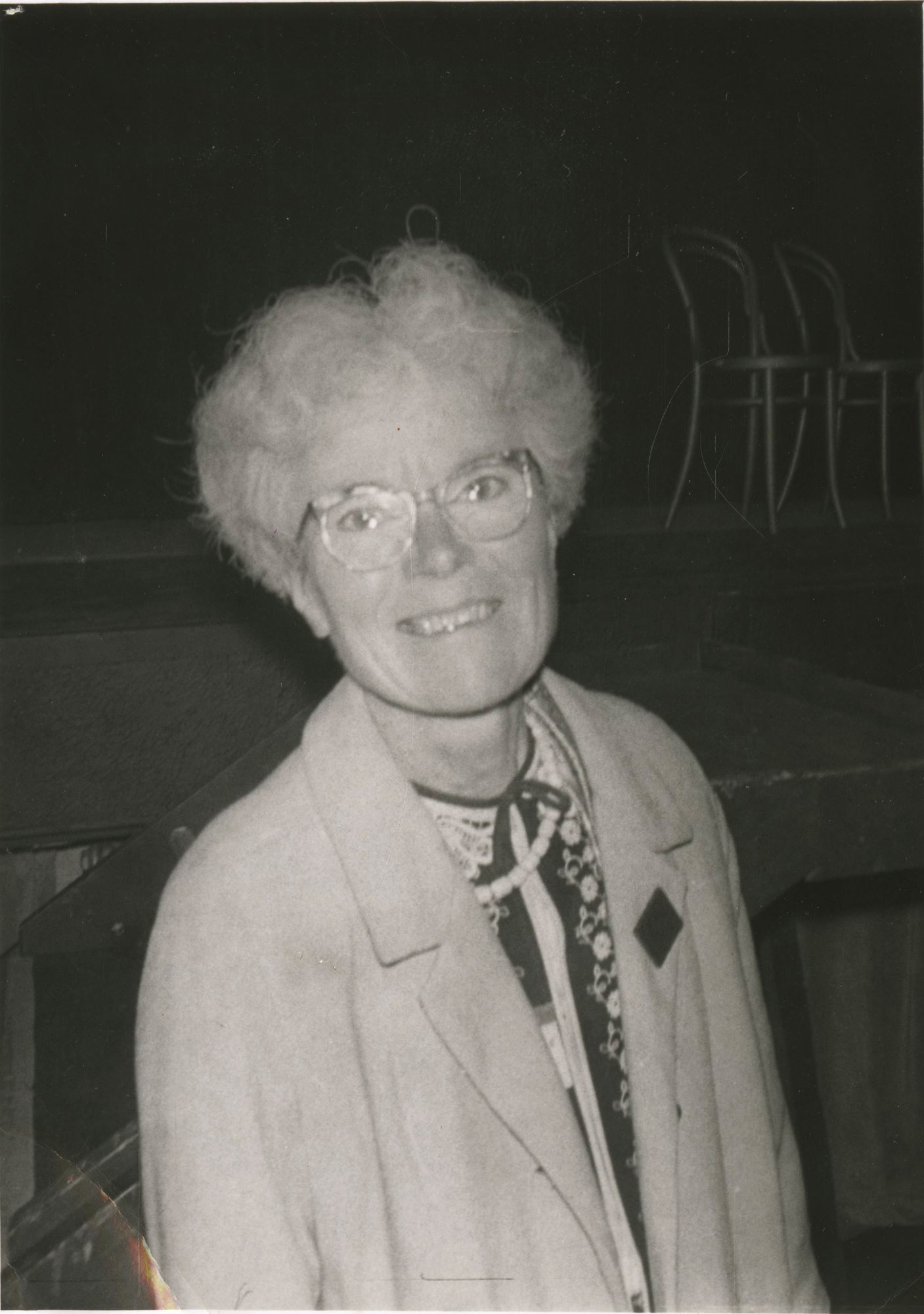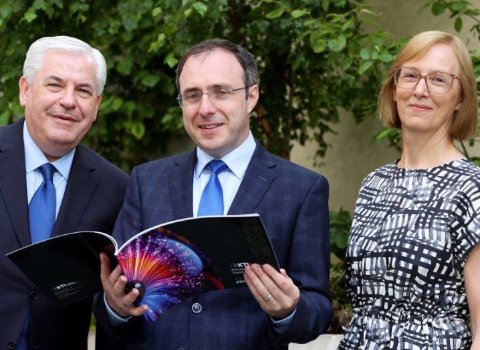Ireland may be the land of saints and scholars, but did you know it's also served as home to a growing list of women who've made their mark on a global scale? Meg Walker highlights just a few inspiring Irish women of the past two centuries so you can share their stories with the next generation.
Lilian Bland
Born in Kent in 1878, Lilian Bland moved with her family to her father’s native Carnmoney in Co Antrim in 1900. It was there that she grew an interest in photography and in 1908 she established a career as a sports journalist and press photographer for London newspapers. She frequently photographed birds and seagulls in flight, developing a fascination with flying. After receiving a postcard of Louis Blériot’s monoplane from an uncle in France, her aspirations in aviation were further fuelled and she began researching the field extensively before setting to work designing and building her own plane – she was one of the first women in the world to do so and flew Ireland’s first powered biplane.
Dr James Barry
A pioneering surgeon who lived as a man in order to have a career in medicine, Cork-born Dr James Barry performed the first successful Caesarean section in the British Empire where both the mother and baby survived. Born Margaret Bulkley in 1789, she decided not to allow the confines of her gender determine her future and disguised herself as a man, deceiving the brightest minds of her time and obtaining a degree in medicine at the age of 22.
Kathleen Lonsdale
Born in 1903 in Newbridge, Co Kildare, Dame Kathleen Lonsdale (née Yardley) was a pacifist, prison reformer and X-ray crystallographer. In 1929, she proved that the benzene ring is flat – a subject scientists had been debating for 60 years – by using X-ray diffraction methods to elucidate the structure of hexamethylbenzene. During her career, Lonsdale achieved many firsts, including being one of the first two women elected a Fellow of the Royal Society in 1945, the first woman tenured professor at University College London, first woman president of the International Union of Crystallography, and the first woman president of the British Association for the Advancement of Science. Ahead of her time in many ways, Kathleen worked extensively to encourage young women to consider a career in science, speaking in schools and writing articles on the changes society needed to make to enable women to live both professional and domestic lives successfully.
Agnes Mary Clerke
Born in Skibbereen, Co Cork in 1842, Agnes Clerke was a science writer and astronomer who despite her lack of formal education, had an enquiring mind, a passion for astronomy, and a talent for writing in detail about complex topics. Her father, with the help of his telescope, taught her about astronomy, while her university-educated brother tutored her in mathematics. Agnes moved with her sister to Italy to study for ten years before settling in London, where she wrote for the Edinburgh Review and contributed scientific biographies for the Encyclopaedia Britannica and Dictionary of National Biography. Agnes went on to study astrophysics, publishing A Popular History of Astronomy During the Nineteenth Century in 1885 – one of seven books on astronomy she would publish in her career. In 1903, Agnes became the fifth woman member of the Royal Astronomical Society. She even has a moon crater named after her.
Kay McNulty
Born in a small Gaeltacht region of Donegal in 1921, Kathleen “Kay” McNulty Mauchly Antonelli emigrated to America in 1923 with her family, settling in Pennsylvania. There, she excelled in school, particularly in maths, and won a scholarship to Chestnut Hill College, where she made the most of her education and took every maths class she could. She graduated in 1942 as one of only three maths graduates in her class, at a time when America was in the throes of WWII and the government was on the hunt for mathematicians. Kay signed up to be a ‘computer’, stood out in her role and was invited to be part of a secret team of
six female computers tasked with programming the new ENIAC (Electronic Numerical Integrator and Computer), one of the first general-purpose electronic digital computers, making her one of the world’s first ever computer programmers. She went on to marry one of the ENIAC’s co-inventors, John Mauchly, in 1948, stepping down from her position, but continued to help programme the new computers her husband was developing. In 1997, she was inducted into the Women in Technology Hall of Fame and today she is recognised as one of the mothers of modern-day computer programming.
Dorothy Stopford Price
Ever hear of the BCG vaccine? (You’ve most likely had it yourself, and if you had children prior to 2015, they would have too.) You have Dorothy Stopford Price to thank for that. As a physician, she was key to the elimination of childhood tuberculosis in Ireland after she began using the vaccine (developed by French researchers Leon Calmette and Camille Guerin) on infants in Dublin’s St Ultan’s Hospital in 1937, thus leading to its eventual rollout after the Irish government adopted the vaccine in the late 1940s.
Phyllis Clinch
Born in 1901, Phyllis Clinch was a botanist most known for her work in the field of plant viruses. Graduating from University College Dublin in 1923 with a first-class honours in botany and chemistry, Phyllis went on to gain her master’s and then PhD in plant physiology. She later made significant contributions to the understanding of plant viruses, especially those that attack the potato crop. Her work proved hugely important to agriculture at a significant time in Ireland’s economic development and she was the first woman to be awarded a Boyle Medal for Scientific Excellence by the RDS in 1961 (the next woman to win this accolade was US-based physicist Margaret Murnane, 50 years later in 2011).
This article was taken from Innovation Ireland Review. Innovation Ireland Review is produced by IDA Ireland & Ashville Media. Link to full magazine: https://issuu.com/ashvillemedia/docs/ida_summer_2022_digital_edition_f51428277576e6?fr=sZjYyZTQ4NjQyMjQ
26/07/2022
Ireland
You Might Also Be Interested In
Tánaiste Joins Ipsen Ireland to Launch Upgraded Manufacturing Site in Blanchardstown
Newly upgraded biopharmaceutical site increasing treatment manufacturing in Ireland by 10% in 2022 versus 2021 – helping Ipsen improve quality of life for more patients with niche and underserved conditions. Additional €15 million investment planned by Ipsen to support continued innovation in Ireland – facility upgrades, technology and sustainability improvements planned for Blanchardstown site from 2023
Read moreTakeda Celebrates 25 Years of Business in Ireland
Quarter-century milestone marked at the pharmaceutical company’s Bray manufacturing site
Read moreRecord €672m spent on Irish research projects last year
Irish companies have shown a strong appetite for engaging with publicly funded research, with 1,780 collaborative R&D projects live at the end of last year.
Read more.jpeg?width=480&height=auto&maxsidesize=480&ext=.jpeg)


